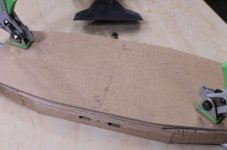Toolpig
Member
- Joined
- Jan 25, 2007
- Messages
- 399
I recently had a nasty jointer accident and I'm looking for safer ways to use this tool --
Anybody have faster/easier/safer ways to joint with (or without) a jointer? I've used a router table in the past, but it's a bit cumbersome.
Thanks for any suggestions.
Jason White
Anybody have faster/easier/safer ways to joint with (or without) a jointer? I've used a router table in the past, but it's a bit cumbersome.
Thanks for any suggestions.
Jason White

